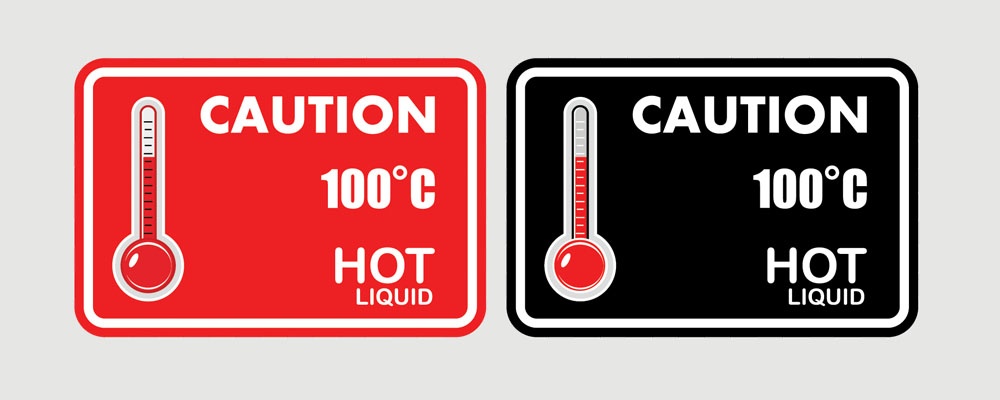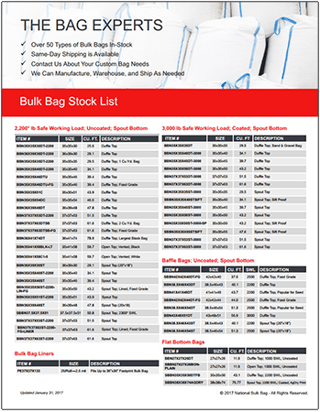At National Bulk Bag, we get a lot of questions regarding the various products and applications in which FIBCs can be used. As bulk bags are used with increasing frequency in the food, pharmaceutical, and chemical industries, the demand for bags that can withstand high temperature exposure will also increase.
However, there is a lot of misinformation in the industry regarding high temp FIBCs. How hot can the product be before the bag fails? Does a liner allow use with a higher temp product? It’s important to know the proper guidelines in order to safely use flexible intermediate bulk containers in high temperature applications.
High Temperature FIBC Guidelines
Bulk bags are made out of polypropylene strands woven together to make the material flexible and strong (learn more about the woven polypropylene by clicking here). Technically speaking, heat exposure of more than 70°F will cause the polypropylene to shift on a molecular level and loosen the fabric. However, at these temperatures the stretching is minimal and thus the risk. The hotter the material, the more loosening and stretching can occur.
For a standard bag, it’s recommended to not put any product in that is over 200°F. If materials over 200°F are put into a flexible intermediate bulk container, the bag should be thoroughly tested after use to check for instability or damage. It’s important to keep in mind that the hotter the material, the greater chances for wear, stretching, and potential damage.
Using Liners with High Temp Products
Standard liners are made out of polyethylene. A flexible and relatively lightweight plastic that is great for protecting food grade and pharmaceutical products from contamination.
There are some draw backs when it comes to using a standard liner for high temp products. Typically, a standard polyethylene liner will begin to melt at about 260°F. Similar to the woven polypropylene material the bag itself is made from, it will begin to soften and shift between 195°F and 210°F. Because of this, it is not recommended to put materials over 170°F in a bulk bag with a standard polyethylene liner.
Very High Temperature Products & Bulk Bags
As you approach the recommended temperature limit for a standard bag (200°F) you may find you have a need for a bag that can both withstand higher temperature exposure (greater than 200°F), and remain durable for re-use with high temp products. For these applications, National Bulk Bag recommends a high temp polypropylene liner instead of a standard polyethylene liner. Polypropylene liners are able to withstand significantly higher temperatures. These liners have a maximum filling temp of 295°F, substantially higher than both a standard flexible intermediate bulk container without a liner (200°F) and a bag with a standard polyethylene liner (170°F).
Industry Uses and Applications for High Temperature FIBCs
There is a variety of industries, products, and applications where high temp bags are required for safe and efficient transport of goods and materials. However, there is no doubt they are more common in specific industries. The food, pharmaceutical and chemical industries are a good fit for bags with high temp ratings. Often, food materials are hot when coming out of certain processes and need a bag that can hold up to intense heat. The same applies for chemicals used in the manufacturing of pharmaceutical products.
Thanks for Reading!
Thanks for reading our post on four common uses for FIBC liners! We hope you found this post both helpful and informative.
Finding the right polyethylene liner for your product and application can be difficult. Not only is it important to determine the right type of liner for your product and application, it is imperative that you also determine the correct size of liner for the specific bag you are using.
To accurately determine what size polyethylene liner is right for the bag you are using or are interested in, download our Liner Estimation Calculator by clicking the button below!






